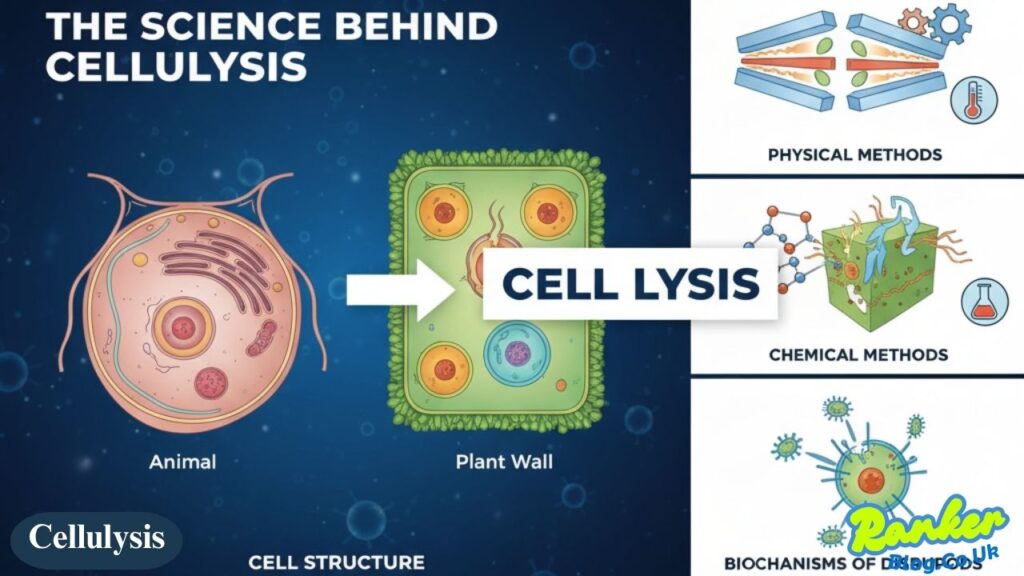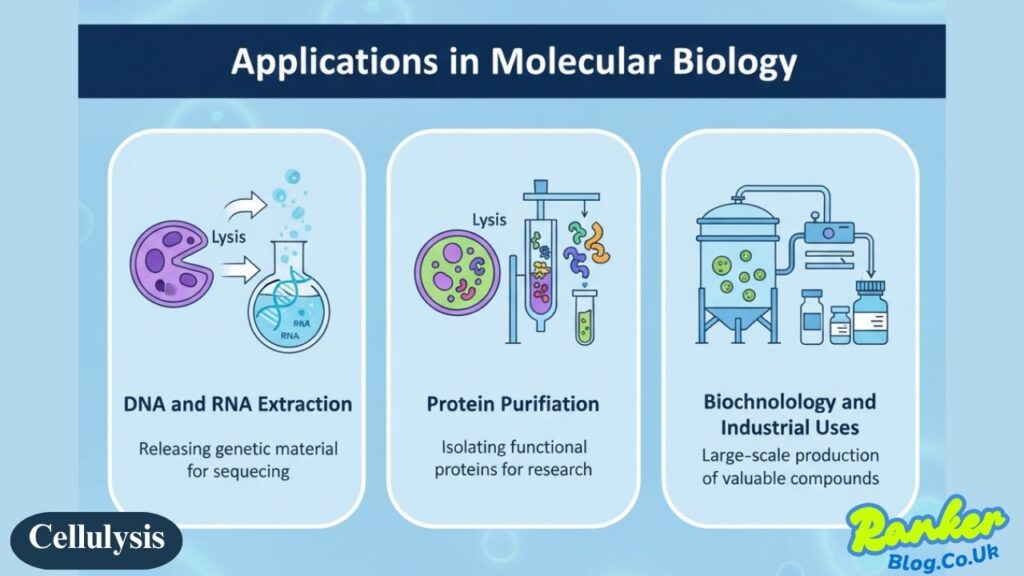Introduction
Cellulysis is a vital biological process that involves breaking down cell walls to release their internal components. This process is widely used in molecular biology, biotechnology, food production, and even cosmetic treatments. In recent years, cellulysis principles have inspired innovative aesthetic products like the MesoMedica Meso Cellulysis Cocktail, designed to help reduce fat deposits and cellulite for smoother, firmer skin.
The Science Behind Cellulysis

Cellulysis refers to the disruption of cell walls or membranes to access their inner materials. In the lab, cellulysis is essential for isolating DNA, proteins, and other molecules for study or industrial use. The structure of the cell wall varies between organisms—plant cells have walls rich in cellulose, while bacterial cell walls contain peptidoglycan. These variations mean different approaches are needed for effective cellulolysis.
In the cosmetic field, the term cellulysis has been adapted to describe targeted fat cell breakdown, which contributes to smoother body contours when combined with lymphatic drainage and metabolic processes.
Understanding Cell Structure
The cell membrane serves as the primary barrier protecting internal cellular components. When cellulysis occurs, this membrane becomes compromised, allowing the contents within to be released. Different cell types require specific methods for effective disruption. Plant cells present unique challenges due to their rigid cellulose-based walls, while animal cells have more flexible membranes that respond differently to lysis techniques.
Mechanisms of Cell Wall Disruption
Cell wall breakdown can occur through various mechanisms. Physical methods include mechanical force, temperature changes, and pressure application. Chemical approaches involve enzymes, detergents, and solvents that weaken structural integrity. Biological factors such as bacterial enzymes and immune system components can also trigger cellulolysis naturally within living organisms.
Types and Methods of Cellulysis

Osmotic Cellulysis
Osmotic cellulysis happens when cells are exposed to solutions with different concentrations from their internal environment. When placed in hypotonic solutions, water rushes into the cell, causing it to swell and eventually burst. This method is particularly effective for certain cell types and is commonly used in laboratory protocols for gentle cell disruption.
Enzymatic Cellulolysis
Enzymatic methods use specific proteins that target cell wall components. Lysozyme, for example, breaks down peptidoglycan in bacterial cell walls, while cellulase enzymes can degrade cellulose in plant cells. These targeted approaches allow researchers to achieve cellulolysis without harsh chemicals that might damage the internal molecules they wish to study.
Mechanical Cell Disruption
Physical force provides another avenue for achieving cellulysis. Techniques like sonication use sound waves to create cavitation bubbles that rupture cell membranes. Bead beating involves shaking cells with tiny beads that physically tear apart cell walls. These methods are robust and work across many cell types, though they can generate heat that may affect sensitive biomolecules.
Chemical Lysis Approaches
Detergents and solvents dissolve lipid membranes, making chemical cellulysis highly efficient. Different detergents suit different purposes—some are gentle and maintain protein structure, while others are more aggressive for complete cell disruption. Researchers select their approach based on what they need to extract and preserve from the cells.
Applications in Molecular Biology

DNA and RNA Extraction
Cellulysis forms the foundation of nucleic acid isolation protocols. To study genetics, scientists must first break open cells to access their DNA or RNA. The lysis step must be thorough enough to release all genetic material while avoiding degradation from cellular enzymes. Properly executed cellulolysis ensures high-quality samples for downstream applications like sequencing and cloning.
Protein Purification
Extracting proteins for research or industrial use begins with effective cellulysis. Scientists carefully choose their lysis method to maintain protein function and structure. The released proteins can then be purified and studied, leading to advances in medicine, agriculture, and manufacturing. Many therapeutic proteins used in modern medicine originate from cellulolysis-based extraction processes.
Biotechnology and Industrial Uses
Large-scale cellulolysis enables biotechnology companies to produce valuable compounds. Genetically modified bacteria or yeast create useful proteins, enzymes, or chemicals inside their cells. Industrial cellulysis releases these products for purification and packaging. This approach has revolutionized pharmaceutical production, enzyme manufacturing, and biofuel development.
Cellulysis in Food Production
The food industry relies on cellulolysis principles for numerous applications. Breaking down plant cell walls releases nutrients, improves texture, and enhances flavor extraction. Fermentation processes involve controlled cellulolysis where microorganisms break down ingredients to create products like cheese, yogurt, and bread. Enzyme treatments can soften tough plant tissues, making them more digestible and palatable.
Cosmetic and Aesthetic Applications
MesoMedica Meso Cellulysis Cocktail
Modern aesthetic medicine has adapted cellulysis concepts for body contouring treatments. The MesoMedica Meso Cellulysis Cocktail represents an innovative approach to reducing localized fat deposits. This formulation combines active ingredients designed to promote fat cell breakdown while supporting skin firmness and elasticity.
Targeting Fat Deposits and Cellulite
Cosmetic cellulysis treatments aim to address stubborn fat accumulations and the dimpled appearance of cellulite. By promoting targeted fat cell disruption, these treatments work alongside the body’s natural metabolic processes. The released contents are then processed through lymphatic drainage and metabolic pathways, potentially leading to smoother body contours over time.
How Aesthetic Cellulysis Works
Unlike surgical fat removal, aesthetic cellulysis approaches work gradually by encouraging natural biological processes. Specialized formulations may contain compounds that affect adipocyte membranes, making fat cells more susceptible to breakdown. Combined with massage techniques that stimulate lymphatic flow, these treatments support the body’s natural elimination of released cellular contents.
Natural Occurrence of Cellulysis
Cellulolysis happens constantly in nature as part of normal biological cycles. When organisms die, decomposer bacteria use enzymes to break down cell walls, recycling nutrients back into the environment. The immune system employs cellulysis to destroy pathogens, with specialized cells releasing enzymes and proteins that rupture bacterial membranes. Even during normal tissue turnover, controlled cellulysis removes old or damaged cells to make room for new ones.
Clinical Significance
Disease States and Cellulysis
Abnormal cellulysis plays a role in various medical conditions. Hemolytic disorders involve excessive red blood cell breakdown, leading to anemia and other complications. Certain bacterial toxins cause uncontrolled cellulolysis of host tissues, contributing to infection severity. Understanding these pathological processes helps researchers develop targeted therapies and diagnostic tools.
Immune System Function
The body’s defense mechanisms rely heavily on cellulolysis to eliminate threats. Natural killer cells and cytotoxic T cells destroy infected or cancerous cells by inducing membrane rupture. Complement proteins create pores in bacterial membranes, causing cellulolysis of invading microorganisms. These protective processes demonstrate how controlled cell breakdown maintains health.
Diagnostic Applications
Medical laboratories use cellulysis techniques for diagnostic testing. Blood cell lysis releases internal components for analysis, helping identify infections, genetic disorders, and metabolic conditions. Tissue samples undergo cellulolysis to extract biomarkers that indicate disease presence or progression. These applications make cellulysis indispensable in modern healthcare.
Laboratory Protocols and Techniques
Optimizing Lysis Conditions
Successful cellulolysis requires careful attention to multiple factors. Temperature affects enzyme activity and membrane stability, while pH influences protein charge and structural integrity. Buffer composition must balance effective disruption with preservation of target molecules. Researchers spend considerable effort optimizing these parameters for each specific cell type and application.
Quality Control Measures
Ensuring complete and consistent cellulysis is crucial for reliable results. Incomplete lysis leaves valuable materials trapped inside intact cells, while over-aggressive methods may damage the molecules being extracted. Quality checks verify that cellulolysis has proceeded as intended, maintaining the integrity of downstream experiments and applications.
Factors Affecting Cellulysis Efficiency
Cell Type Considerations
Different organisms present varying challenges for cellulolysis. Gram-positive bacteria have thick peptidoglycan layers requiring robust treatment, while gram-negative species have thinner walls but additional outer membranes. Fungal cells contain chitin alongside other structural components, demanding specialized approaches. Plant cells with their cellulose walls often require both enzymatic and mechanical methods for complete cellulolysis.
Environmental Conditions
External factors significantly influence cellulolysis success. Salt concentration affects osmotic balance and protein stability. Temperature must be controlled to maintain enzyme activity without causing unwanted degradation. Time of exposure determines whether cellulolysis is complete or partial, affecting the yield and purity of extracted materials.
Prevention and Control of Unwanted Cellulysis
Preserving Cell Integrity
Sometimes, preventing cellulolysis becomes necessary. Sample storage requires conditions that maintain cell membrane stability to preserve specimens for future analysis. Protective agents like cryoprotectants prevent ice crystal formation during freezing, which would otherwise cause mechanical cellulolysis. Careful handling minimizes physical stress that could trigger premature cell breakdown.
Stabilization Methods
Researchers have developed numerous strategies to prevent unwanted cellulolysis. Refrigeration slows enzymatic activity that could damage cell walls. Inhibitors block specific enzymes that cause degradation. Gentle processing techniques minimize mechanical stress. These approaches ensure samples remain intact until intentional cellulolysis is performed under controlled conditions.
Future Directions and Emerging Research
The field of cellulysis continues evolving with new technologies and applications. Researchers are developing more selective methods that target specific cell populations while leaving others intact. Nanotechnology offers possibilities for precisely controlled cellulolysis at microscopic scales. Green chemistry approaches seek environmentally friendly alternatives to harsh chemical lysis methods.
In aesthetic medicine, refinements to cellulysis-based treatments promise improved results with fewer side effects. Understanding the molecular mechanisms of fat cell breakdown may lead to more effective formulations and application techniques. Combination approaches that integrate cellulysis with other therapeutic modalities show particular promise for body contouring applications.
Conclusion
Cellulysis represents a fundamental process with applications spanning from basic research to clinical medicine and cosmetic treatments. Whether breaking down bacterial peptidoglycan for antibiotic development, releasing DNA for genetic analysis, or promoting targeted fat reduction with products like the MesoMedica Meso Cellulysis Cocktail, this biological phenomenon continues proving its versatility and importance.
Understanding the mechanisms, methods, and applications of cellulolysis enables scientists, healthcare providers, and consumers to make informed decisions about its use. As research advances and new technologies emerge, cellulolysis will undoubtedly find additional applications that benefit human health, industrial processes, and aesthetic medicine. The controlled disruption of cell walls and membranes remains an essential tool in humanity’s ongoing quest to understand and harness biological processes for practical purposes.
Also Read: 5 Ways Expert Nursing Foot Care Can Boost Your Overall Mobility and Health

